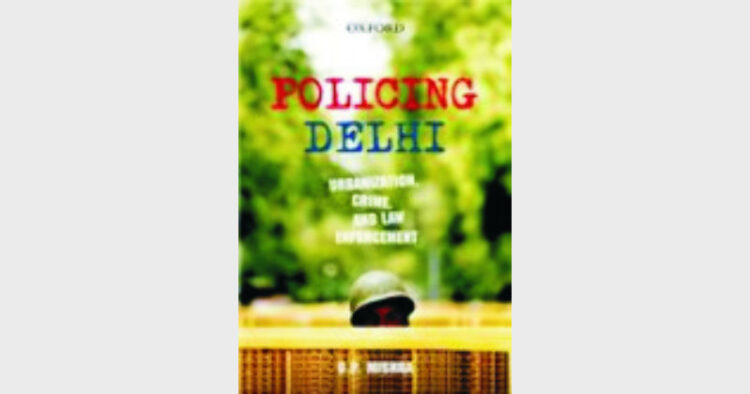No crime capital. Policing no easy task though
Ashish Joshi
Policing Delhi, O P Mishra,Oxford University Press, Pp 269 (HB) Rs 595
Being a policeman is a thankless task; being a policeman in India even more so. Indian policing is vastly different from policing in the West. And policing in Delhi has its own set of challenges. Being the so-called city of ‘VIPs’, the police, apart from looking after the common citizens, has to ensure protection for these movers and shakers, so to speak! And nobody knows better the inherent challenges in policing Delhi than OP Mishra, a senior police officer. In Policing Delhi, he has tried to give a sweeping view of the challenges in maintaining law and order in this unique metropolis, melting pot of myriad cultures, in the context of its urbanisation and growth.
He characterises Delhi as a multi-ethnic, multi-lingual city, a rapidly modernising metropolis with a vast, floating population that needs a different set of policing procedures. Apart from looking after the safety and security of the citizens, Delhi Police also provide security to key diplomatic missions, keep Parliament safe and secure, oversees all kinds of protest marches rallies, ensure a safe passage to the kanwariyas every year, etc. The author have provided charts and graphs to show how the force have evolved over the decades, the crime patterns in the city; there is also a section that deals with crimes against women and minors-and its prevention. The author also explores how changing technology has impacted crime, and a fascinating chapter delves into the typology of criminals.
Written in a simple prose style, the book is recommended for police officers who perform their duties in the national capital and wish to know more about their work as well as for the armchair buff who is looking for an insider account of the workings of one of the world’s largest and most heterogeneous police forces.
(Oxford University Press, Ist floor, YMCA Building,1, Jaisingh Road, New Delhi-110 001)
Ashish Joshi
Hinduism in Manipur, GP Singh, Gyan Books, Pp109, Rs 360.00
 As one of the world’s great religions, Hinduism spread to many parts of the globe, but it was in South Asia, especially India (which saw its genesis) that it flowered and prospered. Today it is practised by more than 800 million Indians, but for some reason it could not establish its hold in the so-called ‘seven sisters’, the seven hill states in north-east India, with the exception of Manipur.
As one of the world’s great religions, Hinduism spread to many parts of the globe, but it was in South Asia, especially India (which saw its genesis) that it flowered and prospered. Today it is practised by more than 800 million Indians, but for some reason it could not establish its hold in the so-called ‘seven sisters’, the seven hill states in north-east India, with the exception of Manipur.
GP Singh, an authority on Indian history and culture, and author of twelve scholarly works on the Hindu canon, has brought out another important work on how Hinduism flourished in Manipur in the eighteenth and nineteenth centuries, and how it impacted Manipuri society and culture. This slim volume begins with the prevalence of Shaivism, Shaktism and Tantrism in Manipuri society; it goes on discuss on how these three cults could never really permeate the Manipuri consciousness due to the formidable presence of the Vaishnava cult, as well as the traditional Sanamahi cult.
The book also touches on the introduction of the Brahmanical culture which led to the birth of a new syncretic culture among Manipuris. It also expatiates on the influence of Manipuri literature and the arts on Manipuri society. This is a useful volume if one wishes to understand the impact of Hinduism on eighteenth and nineteenth century Manipur.
(Gyan Books (P) Ltd., Gyan Kunj, 23 Main Ansari Road, Daryaganj, New Delhi – 110 002, email:order@gyanbooks.com,website: www.gyanbooks.com)













Comments